- Home
- William Shakespeare
Henry VI Page 2
Henry VI Read online
Page 2
The unifying theme that makes the plays work as a trilogy, whatever the circumstances of their origin, is the pitching of two world-pictures against each other. Opposites cannot coexist in harmony, so chaos ensues. In Part I the opposition takes the form of French against English, Joan against Talbot, magical thinking against rationality, female against male, and implicitly Catholic against Protestant. The historical Talbot was a Catholic, but to an audience in the early 1590s, his plain-speaking Englishness and his heroic deeds on the continental mainland would inevitably have evoked the knightly warriors such as Sir Philip Sidney who fought with Robert Dudley, Earl of Leicester, in the religious wars of the 1580s in the Spanish Netherlands. Joan, meanwhile, is a figure familiar from anti-Catholic propaganda: a virgin branded whore (“pucelle” means “maiden” but “puzzel” connotes prostitute), a saint and martyr converted into a conjuror of devils, a figure linked to papist veneration of the Virgin Mary by way of the suggestion of miraculous pregnancy.
The dialectic of Part II pits honest old Duke Humphrey of Gloucester and pious young King Henry VI against the scheming Plantagenets. Richard Duke of York’s brain, “more busy than the labouring spider,” “weaves tedious snares to trap” his enemies; his son Richard, future Duke of Gloucester and eventual Richard III, will develop both this kind of language and his father’s strategizing to chilling effect. As various characters shift allegiance between the houses of York and Lancaster, so audience sympathies shift as the fast-moving action unfolds: the power-hungry York of Part II becomes a figure of pathos when he is forced to wear a paper crown in the final moments before he is stabbed to death in Part III.
THE POPULAR VOICE
Shakespeare does not reveal his own allegiances, but he knows the direction in which history is moving. A key incident in this regard is the fake miracle of Simpcox in Part II: King Henry is taken in, a mark of his naive faith, whereas Humphrey of Gloucester adopts the skeptical, interrogative voice of a witchfinder—for which the contemporary equivalent would have been a seeker after closet Catholics. Revealingly, the source for this scene was not the pro-Tudor chronicle of Edward Hall but the anti-Catholic martyrology of John Foxe. Other “medieval,” and thus implicitly Catholic, elements are also subverted: the Duchess of Gloucester’s reliance on conjuration and the trial by combat between the armorer Horner and his man Peter both backfire.
Protestantism, with its rejection of the hierarchies of saints and cardinals, its commitment to the Bible in the language of the people, was associated with a democratization of religious faith. Part II is the element of the trilogy that toys with the popular voice (hence its significant proportion of prose writing, which is entirely absent from the first and third parts), but it cannot be said to endorse a modern notion of democracy. Jack Cade is a highly attractive figure onstage because he speaks in the same language as the commoners in the audience; his clowning offers welcome respite from the high rhetoric and low cunning of the aristocrats, and such lines as “the first thing we do, let’s kill all the lawyers” elicit an approving laugh in every age. But Shakespeare, who made his living by the literacy that his father lacked, can hardly be said to approve of a character who orders the hanging of a village clerk for the crime of being able to read and write. And Cade’s vision of England is self-contradictory to the core:
CADE Be brave, then, for your captain is brave, and vows reformation. There shall be in England seven halfpenny loaves sold for a penny: the three-hooped pot shall have ten hoops, and I will make it felony to drink small beer. All the realm shall be in common, and in Cheapside shall my palfrey go to grass: and when I am king, as king I will be—
ALL God save your majesty!
This is a double-edged “reformation”: cheap bread, un watered ale, and the land held in common sound Utopian, but Cade does not really want representative government. He wants to be king himself. Shakespeare plays the same trick against the “commonwealth” idealism of the courtier Gonzalo twenty years later in The Tempest: “No sovereignty— / Yet he would be king on’t.” If Shakespeare has an Eden, it is not a place anterior to class distinction on the lines of the old rhyme “When Adam delved and Eve span / Who was then the gentleman?” but rather an English gentleman’s country estate, a place of peace and retreat where Cade is an intruder: the Kentish garden of Alexander Iden.
THE TRAGIC AGON
There is a primal quality to the three plays of Henry VI. The basis of drama is agon, the Greek word for “struggle” or “contest.” According to Aristotle, the origin of tragedy was the moment when an actor split off from a chorus and began to enter into dialogue with them. Later came a second actor and a further opportunity for confrontation—the term for the first actor was “protagonist” and the second “deuteragonist.” Conversation in the theater of historical tragedy is always a form of agon, which rapidly escalates into emotional intensity (agony) and thence to physical violence. Shakespeare, with his highly self-conscious theatrical art, is always acutely aware of the several agons that coexist in the theater: between the actor and his role (the struggle to master a part), between the players and the audience (the struggle to grab attention, to move a crowd of onlookers to woe and wonder), within each individual character (the play of conflicting desires and duties), as well as between the characters in their dialogue and stage disposition.
War is the logical culmination of an agonistic world: it is the beginning and end of the three parts of Henry the Sixth. The process of escalation is such that Part III in particular portrays the complete breakdown of society. The play has the harrowing, relentless quality of Greek tragedy, where people live and die according to a code of revenge, the sins of the fathers are visited upon the children, and the language moves between rhetorical, proto-operatic arias of anger, anguish, invective, and rapid-fire one-line exchanges in which the essential conflicts between Lancastrians and Yorkists, men and women, old and young, self-servers and seekers after justice, winners and losers, are stripped to their essentials. In this world, words are weapons, but just occasionally they are harbingers of hope, as when King Henry VI lays his hands on young Henry Richmond’s head and says:
Come hither, England’s hope. If secret powers
Suggest but truth to my divining thoughts,
This pretty lad will prove our country’s bliss.
His looks are full of peaceful majesty,
His head by nature framed to wear a crown,
His hand to wield a sceptre, and himself
Likely in time to bless a regal throne.
Make much of him, my lords, for this is he
Must help you more than you are hurt by me.
This anointing looks forward to the establishment of the Tudor dynasty when Richmond becomes Henry VII, Queen Elizabeth’s grandfather. But, as always seems to happen at moments of apparent stasis in these plays, a messenger then rushes on with the news that the rival king, Edward, has escaped. The violence continues apace. And before the final victory of Richmond at Bosworth Field, England must endure the darkness and blood of Crookback Richard’s reign, to which Shakespeare will turn his attention in his next tragedy.
ABOUT THE TEXT
Shakespeare endures through history. He illuminates later times as well as his own. He helps us to understand the human condition. But he cannot do this without a good text of the plays. Without editions there would be no Shakespeare. That is why every twenty years or so throughout the last three centuries there has been a major new edition of his complete works. One aspect of editing is the process of keeping the texts up to date—modernizing the spelling, punctuation, and typography (though not, of course, the actual words), providing explanatory notes in the light of changing educational practices (a generation ago, most of Shakespeare’s classical and biblical allusions could be assumed to be generally understood, but now they can’t).
But because Shakespeare did not personally oversee the publication of his plays, editors also have to make decisions about the relative authority of the earl
y printed editions. Half of the sum of his plays only appeared posthumously, in the elaborately produced First Folio text of 1623, the original “Complete Works” prepared for the press by Shakespeare’s fellow actors, the people who knew the plays better than anyone else. The other half had appeared in print in his lifetime, in the more compact and cheaper form of “Quarto” editions, some of which reproduced good quality texts, others of which were to a greater or lesser degree garbled and error-strewn. In the case of a few plays there are hundreds of differences between the Quarto and Folio editions, some of them far from trivial.
If you look at printers’ handbooks from the age of Shakespeare, you quickly discover that one of the first rules was that, whenever possible, compositors were recommended to set their type from existing printed books rather than manuscripts. This was the age before mechanical typesetting, where each individual letter had to be picked out by hand from the compositor’s case and placed on a stick (upside down and back to front) before being laid on the press. It was an age of murky rush-light and of manuscripts written in a secretary hand that had dozens of different, hard-to-decipher forms. Printers’ lives were a lot easier when they were reprinting existing books rather than struggling with handwritten copy. Easily the quickest way to have created the First Folio would have been simply to reprint those eighteen plays that had already appeared in Quarto and only work from manuscript on the other eighteen.
But that is not what happened. Whenever Quartos were used, playhouse “promptbooks” were also consulted and stage directions copied in from them. And in the case of several major plays where a reasonably well-printed Quarto was available, the Folio printers were instructed to work from an alternative, playhouse-derived manuscript. This meant that the whole process of producing the first complete Shakespeare took months, even years, longer than it might have done. But for the men overseeing the project, John Hemings and Henry Condell, friends and fellow actors who had been remembered in Shakespeare’s will, the additional labor and cost were worth the effort for the sake of producing an edition that was close to the practice of the theater. They wanted all the plays in print so that people could, as they wrote in their prefatory address to the reader, “read him and again and again,” but they also wanted “the great variety of readers” to work from texts that were close to the theater life for which Shakespeare originally intended them. For this reason, the RSC Shakespeare, in both Complete Works and individual volumes, uses the Folio as base text wherever possible. Significant Quarto variants are, however, noted in the Textual Notes.
All three parts of Henry VI were printed in the Folio, where, incidentally, they were first referred to as the First, Second, and Third Parts of Henry VI. The play we now know as Part I made its first appearance in the Folio, while Part II and Part III had been printed in the early 1590s under the names The First Part of the Contention of the two Famous Houses of York and Lancaster and The True Tragedy of Richard Duke of York (see Introduction). The Folio text of Part I is the only early version we have, and seems to have been set from authorial papers, its multiple authorship in some way attested to by the different spelling habits and inconsistent speech headings from scene to scene that would have been in some measure smoothed if a scribe had prepared the copy. Other deficiencies in performance considerations seem to attest that the copy used by the printer was never used in the theater (which is not to say that the play wasn’t performed—we know it was). The quarto and octavo texts of Contention and True Tragedy respectively are much shorter and linguistically poorer than their Folio counterparts, leading many to hypothesize that they are memorial reports of versions that had been shortened for performance. The Folio texts, Part II and Part III, are substantially longer, better versions which bear similar evidence to Part I of being set from authorial—as opposed to scribal/theatrical—papers.
The following notes highlight various aspects of the editorial process and indicate conventions used in the text of this edition:
Lists of Parts are supplied in the First Folio for only six plays, not including Henry VI, so the list here is editorially supplied. Capitals indicate that part of the name which is used for speech headings in the script (thus “Duke Humphrey of GLOUCESTER, Lord Protector, the king’s uncle”).
Locations are provided by Folio for only two plays, which does not include the Henry VI plays. Eighteenth-century editors, working in an age of elaborately realistic stage sets, were the first to provide detailed locations (“Another part of the palace/battlefield,” etc.). Given that Shakespeare wrote for a bare stage and often an imprecise sense of place, we have relegated locations to the explanatory notes, where they are given at the beginning of each scene where the imaginary location is different from the one before.
Act and Scene Divisions were provided in Folio in a much more thoroughgoing way than in the Quartos. Sometimes, however, they were erroneous or omitted; corrections and additions supplied by editorial tradition are indicated by square brackets. Five-act division is based on a classical model, and act breaks provided the opportunity to replace the candles in the indoor Blackfriars playhouse the King’s Men used after 1608, but Shakespeare did not necessarily think in terms of a five-part structure of dramatic composition. The Folio convention is that a scene ends when the stage is empty. Nowadays, partly under the influence of film, we tend to consider a scene to be a dramatic unit that ends with either a change of imaginary location or a significant passage of time within the narrative. Shakespeare’s fluidity of composition accords well with this convention, so in addition to act and scene numbers we provide a running scene count in the right margin at the beginning of each new scene, in the typeface used for editorial directions. Where there is a scene break caused by a momentary bare stage, but the location does not change and extra time does not pass, we use the convention running scene continues. There is inevitably a degree of editorial judgment in making such calls, but the system is very valuable in suggesting the pace of the plays.
Speakers’ Names are often inconsistent in Folio. We have regularized speech headings, but retained an element of deliberate inconsistency in entry directions, in order to give the flavor of Folio. For example, in Part I and Part II GLOUCESTER is always so-called in speech headings but is sometimes “Duke Humphrey” or “Protector” in entry directions; in Part III, QUEEN MARGARET is always so-called in speech headings but often simply “Queen” in entry directions.
Verse is indicated by lines that do not run to the right margin and by capitalization of each line. The Folio printers sometimes set verse as prose, and vice versa (either out of misunderstanding or for reasons of space). We have silently corrected in such cases, although in some instances there is ambiguity, in which case we have leaned toward the preservation of Folio layout. Folio sometimes uses contraction (“turnd” rather than “turned”) to indicate whether or not the final “-ed” of a past participle is sounded, an area where there is variation for the sake of the five-beat iambic pentameter rhythm. We use the convention of a grave accent to indicate sounding (thus “turnèd” would be two syllables), but would urge actors not to overstress. In cases where one speaker ends with a verse half line and the next begins with the other half of the pentameter, editors since the late eighteenth century have indented the second line. We have abandoned this convention, since the Folio does not use it, nor did actors’ cues in the Shakespearean theater. An exception is made when the second speaker actively interrupts or completes the first speaker’s sentence.
Spelling is modernized, but older forms are occasionally maintained where necessary for rhythm or aural effect.
Punctuation in Shakespeare’s time was as much rhetorical as grammatical. “Colon” was originally a term for a unit of thought in an argument. The semicolon was a new unit of punctuation (some of the Quartos lack them altogether). We have modernized punctuation throughout, but have given more weight to Folio punctuation than many editors, since, though not Shakespearean, it reflects the usage of his period. In particular,
we have used the colon far more than many editors: it is exceptionally useful as a way of indicating how many Shakespearean speeches unfold clause by clause in a developing argument that gives the illusion of enacting the process of thinking in the moment. We have also kept in mind the origin of punctuation in classical times as a way of assisting the actor and orator: the comma suggests the briefest of pauses for breath, the colon a middling one, and a full stop or period a longer pause. Semicolons, by contrast, belong to an era of punctuation that was only just coming in during Shakespeare’s time and that is coming to an end now: we have accordingly only used them where they occur in our copy texts (and not always then). Dashes are sometimes used for parenthetical interjections where the Folio has brackets. They are also used for interruptions and changes in train of thought. Where a change of addressee occurs within a speech, we have used a dash preceded by a period (or occasionally another form of punctuation). Often the identity of the respective addressees is obvious from the context. When it is not, this has been indicated in a marginal stage direction.
Entrances and Exits are fairly thorough in Folio, which has accordingly been followed as faithfully as possible. Where characters are omitted or corrections are necessary, this is indicated by square brackets (e.g. “[and Attendants]”). Exit is sometimes silently normalized to Exeunt and Manet anglicized to “remains.” We trust Folio positioning of entrances and exits to a greater degree than most editors.

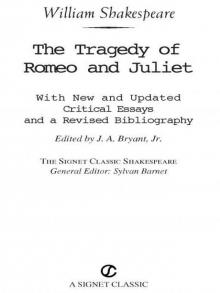 Romeo and Juliet
Romeo and Juliet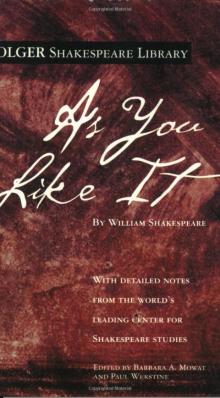 As You Like It (Folger Shakespeare Library)
As You Like It (Folger Shakespeare Library)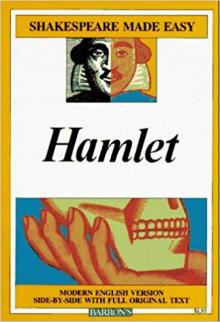 Hamlet
Hamlet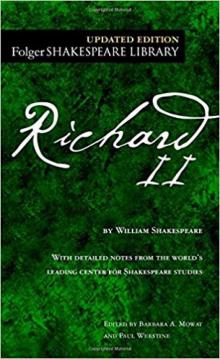 Richard II (Folger Shakespeare Library)
Richard II (Folger Shakespeare Library) Macbeth
Macbeth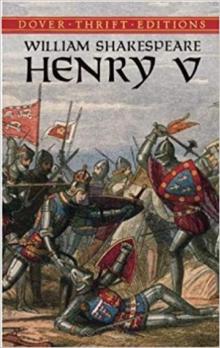 Henry V
Henry V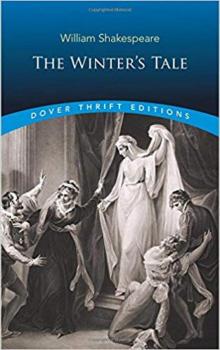 The Winter's Tale
The Winter's Tale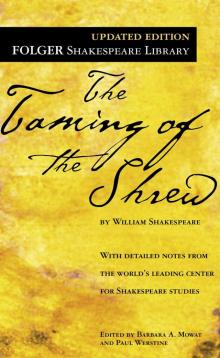 The Taming of the Shrew
The Taming of the Shrew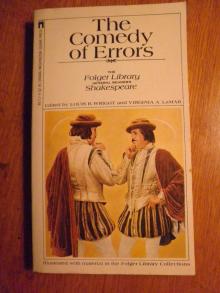 The Comedy of Errors
The Comedy of Errors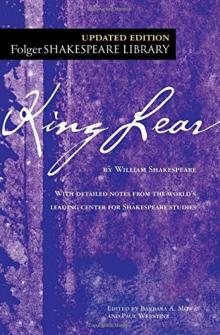 King Lear (Folger Shakespeare Library)
King Lear (Folger Shakespeare Library)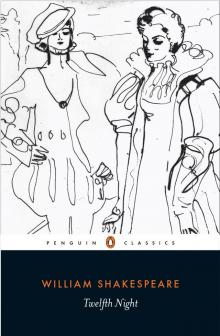 Twelfth Night
Twelfth Night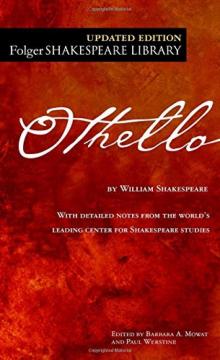 Othello
Othello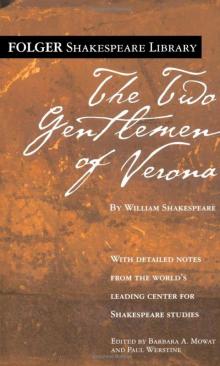 The Two Gentlemen of Verona
The Two Gentlemen of Verona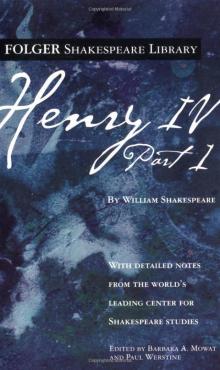 Henry IV, Part 1 (Folger Shakespeare Library)
Henry IV, Part 1 (Folger Shakespeare Library)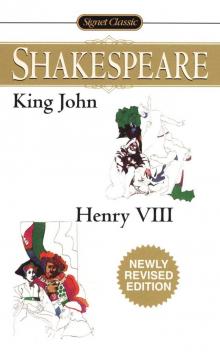 King John/Henry VIII (Signet Classics)
King John/Henry VIII (Signet Classics)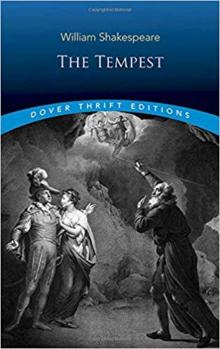 The Tempest
The Tempest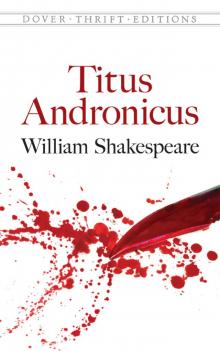 Titus Andronicus (Dover Publications)
Titus Andronicus (Dover Publications)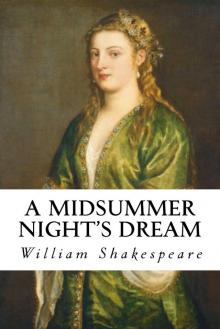 A Midsummer Night's Dream
A Midsummer Night's Dream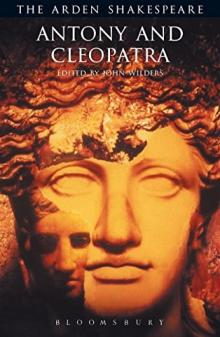 Antony and Cleopatra (Arden Shakespeare: Third Series)
Antony and Cleopatra (Arden Shakespeare: Third Series)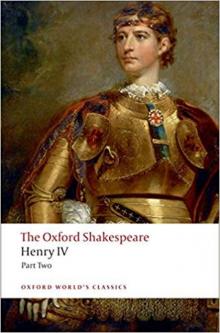 The Oxford Shakespeare: Henry IV, Part 2 (Oxford World's Classics)
The Oxford Shakespeare: Henry IV, Part 2 (Oxford World's Classics)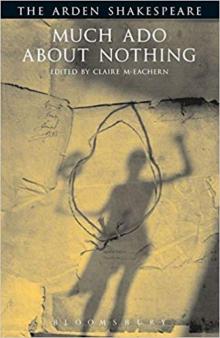 Much Ado About Nothing (Arden Shakespeare: Third Series)
Much Ado About Nothing (Arden Shakespeare: Third Series)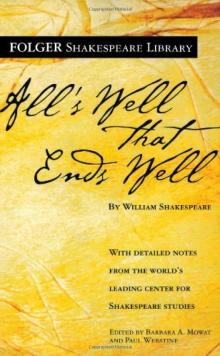 All's Well That Ends Well
All's Well That Ends Well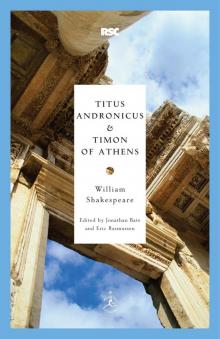 Titus Andronicus & Timon of Athens
Titus Andronicus & Timon of Athens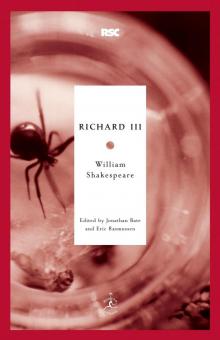 Richard III (Modern Library Classics)
Richard III (Modern Library Classics)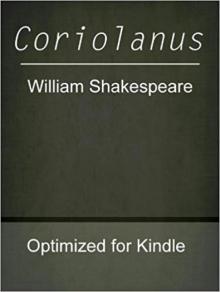 Coriolanus
Coriolanus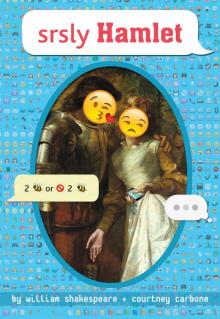 srsly Hamlet (OMG Shakespeare)
srsly Hamlet (OMG Shakespeare)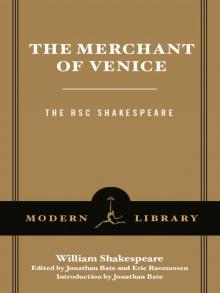 The Merchant of Venice
The Merchant of Venice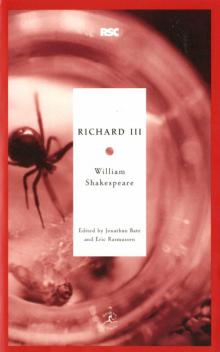 Richard III
Richard III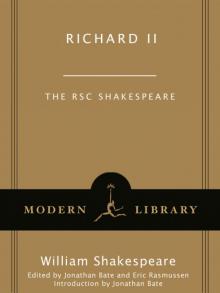 Richard II
Richard II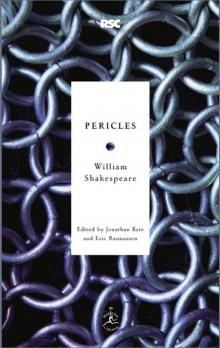 Pericles
Pericles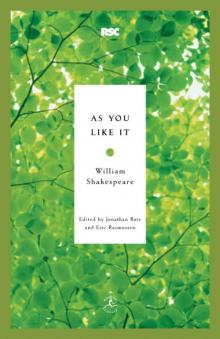 As You Like It
As You Like It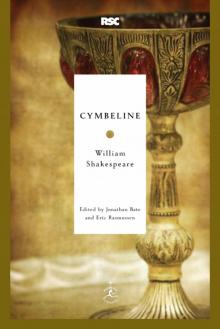 Cymbeline
Cymbeline Alls Wel that ends Well
Alls Wel that ends Well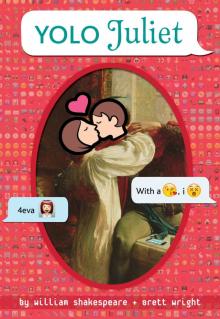 YOLO Juliet
YOLO Juliet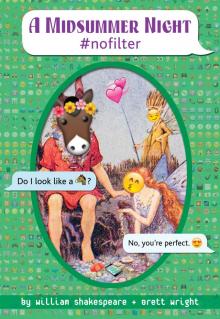 A Midsummer Night #nofilter
A Midsummer Night #nofilter Love's Labour's Lost
Love's Labour's Lost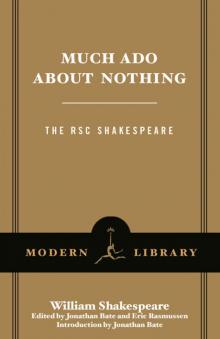 Much Ado About Nothing
Much Ado About Nothing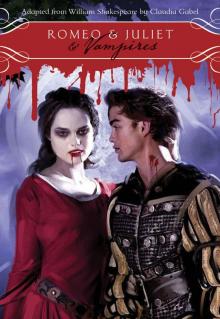 Romeo & Juliet & Vampires
Romeo & Juliet & Vampires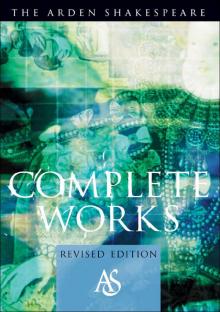 The Arden Shakespeare Complete Works
The Arden Shakespeare Complete Works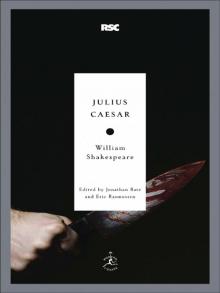 Julius Caesar
Julius Caesar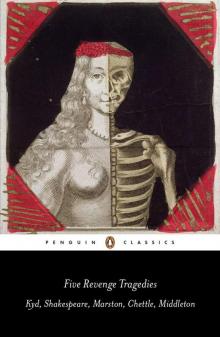 Five Revenge Tragedies: The Spanish Tragedy, Hamlet, Antonio's Revenge, The Tragedy of Hoffman, The Revenger's Tragedy (Penguin Classics)
Five Revenge Tragedies: The Spanish Tragedy, Hamlet, Antonio's Revenge, The Tragedy of Hoffman, The Revenger's Tragedy (Penguin Classics)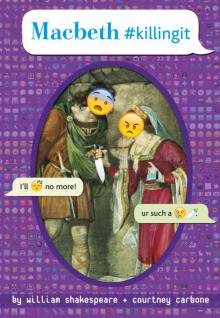 Macbeth #killingit
Macbeth #killingit The Oxford Shakespeare: The Complete Works
The Oxford Shakespeare: The Complete Works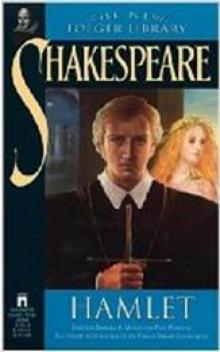 Hamlet, Prince of Denmark (Collins edition)
Hamlet, Prince of Denmark (Collins edition)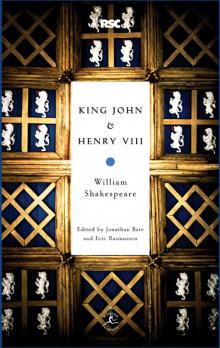 King John & Henry VIII
King John & Henry VIII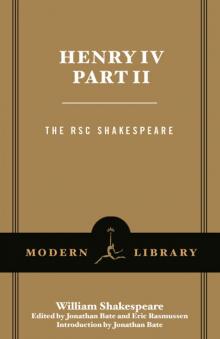 Henry IV, Part 2
Henry IV, Part 2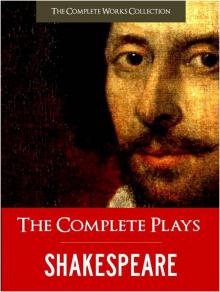 Complete Plays, The
Complete Plays, The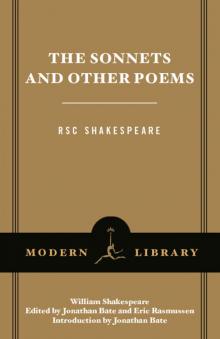 The Sonnets and Other Poems
The Sonnets and Other Poems Antony and Cleopatra
Antony and Cleopatra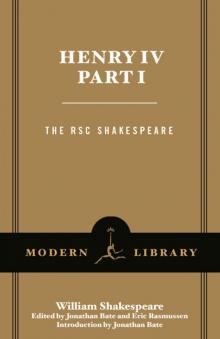 Henry IV, Part 1
Henry IV, Part 1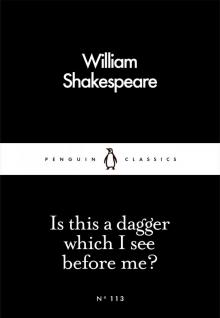 Is This a Dagger Which I See Before Me?
Is This a Dagger Which I See Before Me?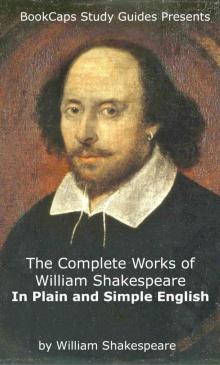 The Complete Works of William Shakespeare In Plain and Simple English (Translated)
The Complete Works of William Shakespeare In Plain and Simple English (Translated)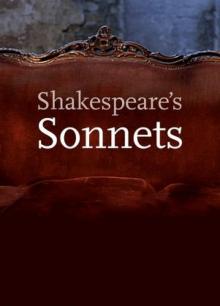 The Sonnets
The Sonnets